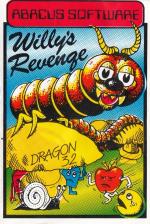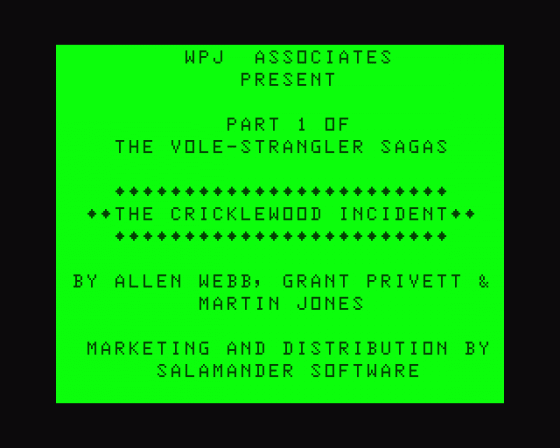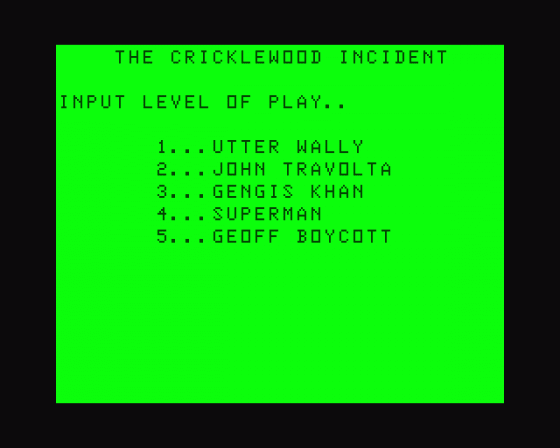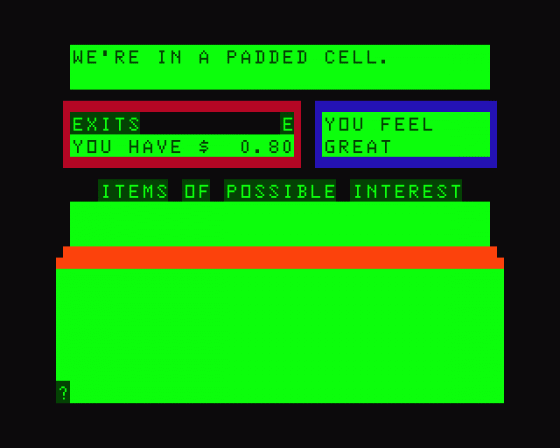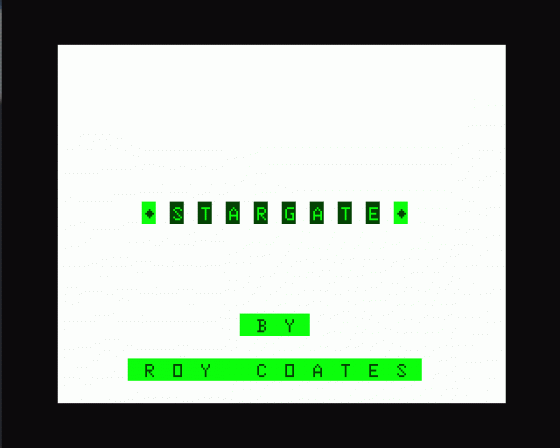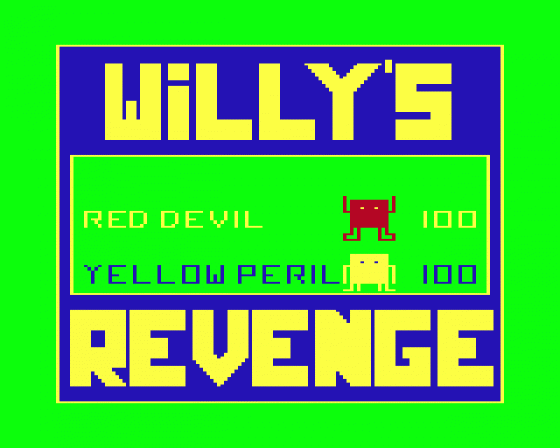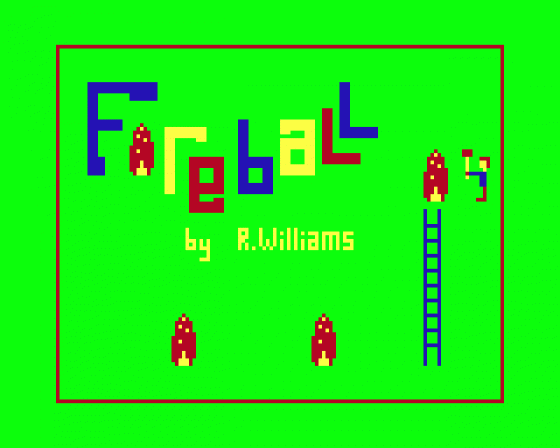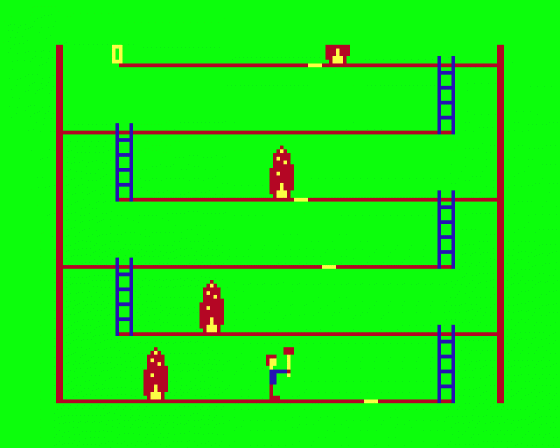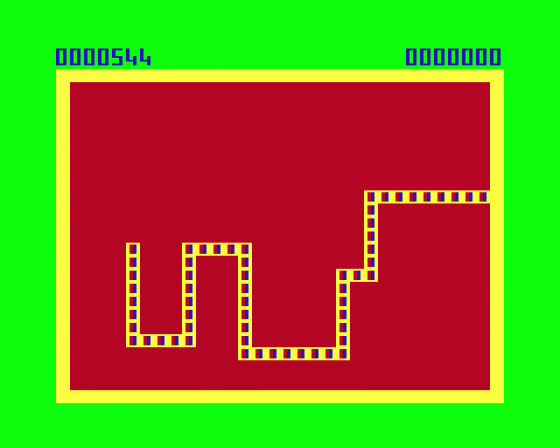
Dragon User
 1st May 1984
1st May 1984
Categories: Review: Software
Author: John Scriven
Publisher: Abacus
Machine: Dragon 32
Published in Dragon User #013
Follow John Scriven as he ventures into the software world to fight off thugs, steal a secret weapon, free the workers and much more!
Introduction
In recent months I've seen quite a selection of so-called educational software that shouldn't have escaped from the grasp of the programmer. Perhaps in the distant past it might have been satisfactory to use computers to administer table tests. Or to demonstrate how to "do long multiplication". When a computer is used in the fieid of education, whether at school or at home, it needs to be used creatively, and needs to do things that could not be achieved in other ways. Although the programs that I've looked at this month are not advertised as being "educational", there are some that deserve a place in an educational collection far more than some that are sold as such.
Mystery Of The Java Star (Shards)
One company that usually produces interesting programs is Shards Software. Following on from its earlier epic, Pettigrew's Diary, Shards has just released two adventures that follow a similar structure. Both consist of more than one program, and in Mystery Of The Java Star, clues discovered in early sections are needed to achieve the final goal.
Mystery Of The Java Star begins in Bristol, where you are shown a parchment that has been hidden in an old sea-chest for many years. Given £13,000 to begin with, you have to equip yourself for an expedition to find the fabled ruby, the Java Star of the title.
Your first expense is in assembling the jumbled message from the chest. The pieces are set out like those little plastic puzzles where you rearrange the titles, and in this version you can swop pieces until the message is readable. To help you solve the problem, you are allowed to peep at the finished mission, but naturally nothing's for nothing, so each peep costs you £10.
Once you have worked out the dying message from the parchment, it crumbles into dust, and you have to repeat the procedure with the treasure map. If you have seen Puzzler from Shards, then you will see that it has cleverly incorporated the graphics routines from the earlier program in Mystery Of The Java Star.
The second sub-program takes place in London, where living expenses are £30 per day. There are more than 30 different places you can visit in order to extract the vital information necessary for your trip but unsuccessful locations will cost you a day's expenses. As each fresh place appears on the screen, pressing the Space bar reveals details, and whether any information is forthcoming. You certainly learn about some of the more interesting places to visit in London, from Mansion House to the National Maritime Museum, and this increases the educational value of the program.
There are two more sections that allow you to exptore an area of islands and to finally dive to find the true mystery behind this adventure. Although this doesn't tax the mind as much as most text adventures, it's fun to play and is the sort of software that should be used in schools, rather than the boring drills that seems to abound under the name of educational software. My one criticism is that once you reach the end, there's nothing left but to play an identical game. This, however, is a criticism of many adventure games, and it's not so easy that you'll reach the end in one evening.
North Sea Oil (Shards)
North Sea Oil is a simulation program that puts you in the role of the Offshore Installation Manager of a North Sea drilling rig. This position entails getting a supply vessel to the rig and organising the workforce in the most economical way possible.
I didn't find this as interesting to play as Mystery Of The Java Star, and I couldn't swear as to the accuracy of the simulation. But the program is well-written, and is a combination of a graphic adventure with a rule-the-economy kingdom-type game, and would be popular with older children who want something more subtle than mere alien-blasting.
The Cricklewood Incident (Salamander)
Knowing that I'd already played all three editions of Dan Diamond's exploits, this month was looking a little flat. Luckily Salamander Software has produced another pair of strange adventures to entertain those of you who have a weird sense of humour.
The Cricklewood Incident concerns the exploits of a certain Arnold Q Volestrangler, bored millionaire eccentric whose one aim in life is to seek the Holy Grail before retiring to the privacy of his padded cell. The screen display is used in a similar, though rather more complex way to that employed in the Dan Diamond trilogy, and is split into five sections: a scene description, a fist of possible exits, a health indicator, an area for descriptions of objects and a section for messages and inputs. At the start you can choose a suitable persona, so ignoring the opportunity to be Ghengis Khan or Geoff Boycott, I adopted the role of Utter Wally (no comments, please!) and dived into the padded cell. After walking down a tree-lined road for sorme minutes, I met a Hell's Angel who challenged me to a fight. Choosing from a menu of unpleasant things I waved my armpits at him and he ran off, leaving behind 16 pence. As I stood there counting my ill-gotten gains, another Angel came up and mugged me.
Shortly after this I was abducted by an alien spacecraft and jettisoned in a chemist's. Soon after that, I pressed a button that I'd been warned not to touch and managed to lose the program. If you think you can cope with such lunacy coupled with a very high frustration level, then you may enjoy this program. I certainly found it amusing, but was also tempted on numerous occasions to melt the cassette down into something more useful, like a paper weight.
Wings Of War (Salamander)
Wings Of War is also a text only adventure using a formatted display, but this time the theme is more serious, and is set in occupied France during the last war. I say more serious, because nothing that comes from Brighton is ever completely what it seems, and there is a lot of tongue-in-cheek humour present here.
In a starring role as Lieutenant Roger Wilcoe, it is your mission to be parachuted down near a chateau where a new German secret weapon is being developed. Having found your possessions which are scattered through the dank wood, you can enter the chateau and attempt to collect the necessary bits and pieces which make up the bomb. If you reach this stage you can make your way to safety back in England.
If you prefer something slightly saner than The Cricklewood Incident, then you will probably enjoy pitting your wits against the Nazi menace in Wings of War. If you play these two adventures, it's a good idea to regularly save your position, as destruction awaits you round every corner.
Turtle Graphics (Salamander)
Also from Salamander this month comes one of those monster video boxes containing a tiny cassette. In this case it can be justified to a small degree by the instruction booklet which is almost A5 in size. The program in question is Turtle Graphics, the first implementation I have seen for the Dragon.
Based on the graphics routines from the language Logo, turtle programs can demonstrate basic programming procedures far better than a language such as Basic. If you want to know the story behind Logo, you can do no better than to get a copy of Seymour Papperl's book Mindstorms, which describes the experience of children learning to program using Logo in the States. I am glad to see that Salamander has resisted the temptation to call this program Logo, like some firms who produce turtle graphics programs for other micros. A full implementation of Logo is far more than just turtle graphics, although this is an important facet of the language.
The idea behind Turtle Graphics is that you control a screen turtle, and give it commands which it obeys, such as forward, or right. As it moves, it leaves a mark to show its trail. Because of this, and its innate slowness, Snail Graphics would probably be a more accurate name. In fact, this version is not too slow, especially if your Dragon can operate faster by using the infamous high speed POKE.
Not only can the turtle move in immediate mode, it can also learn to obey a series of instructions entered as a little program. In this respect, it resembles the toy, Bigtrak. Each mini-program can have a name, so you can define a word, SQUARE, that consists of the commands F20, R90, F20, R90, F20, R90, F20, R90. (F stands for forward, and R for turn right so many degrees.) To make it simpler, you can put the commands in a repeat loop: *4(F20 R90). If the word SQUARE was saved in the internal library, then entering (n.SQUARE would produce a little square in the middle of the screen. The word SQUARE can now be used in other definitions.
In Mindstorms, Pappert uses the example of a square and a triangle being defined, and the two being combined to make a word called HOUSE. This figure is repeated across the screen in the word STREET, showing that definitions can be built up and stored. The program Turtle Graphics also allows the use of variables and random numbers, and both the screen mode and colours can be changed during the course of the program and a permanent record saved if you have a printer or plotter attached. The accompanying booklet is well-produced, and contains both an instruction section and a reference section illustrated with little cartoons.
The Dragon is an ideal computer to use for this sort of program, as separate screens can exist in memory, and viewing the command or library area doesn't end the drawing screen. As a drawing aid, this program falls short of specialist graphics utilities, but this is not where its main value lies. Apart from learning about simple programming, elementary geometry is used in a real environment that results in an interesting and very worthwhile cassette.
Stargate (Abacus)
After the mind-taxing of adventure programs, and the fun of training turtles, I thought I'd relax one evening and check out the latest arcade games. It was not as pleasant as I'd anticipated, however. The first cassette I picked up was Stargate from Abacus Software. When the Dragon first appeared in the dim and distant days of 1982, I used to curse the cassette operating system that produced so many duff loads. Only the early BBC micros and Orics seemed worse, and I ended up buying a vari-speed cassette deck with separate tone controls. Since then, I've rarely found a tape that failed to load on some setting, and indeed most tapes now load first time. After struggling with Stargate for 20 minutes, it finally loaded at full volume and tone, and an increase of 10 per cent in tape speed. Unfortunately, it wasn't worth the effort. The screen display is minimal � just a square in the centre designated the stargate, and an enemy ship that appears at random firing at one of the sides. If you fire back, your shots prevent the other ship from hitting you. There is no other display, and the game continues until you give up out of sheer boredom. There seemed to be a fault in the review copy, in that there was no on-screen scoring, so it was impossible to see how well I was doing. The instructions on the cassette sleeve were also different to those on the cassette itself.
Willy's Revenge (Abacus)
After this experience, I faced Willy's Revenge, also from Abacus, with some trepidation. In fact, it's about a hundred times better than Stargate. Similar to the arcade game of Caterpillar, it involves chasing round a garden squashing any creatures that appear in your path. As you go over more things, the speed increases, as does your length, and the game gets more difficult. You lose a life each time you double back on yourself or run into the garden wall. I think I prefer the versions, which pit you against the caterpillar, rather than this one, but although not outstanding, it's a vast improvement on Caterpillar.
Fireball (Abacus)
My favourite Abacus game this month is Fireball. The object is to climb to the top level of a burning building by means of several ladders and to hit ^ fire hydrant on the top floor with a hampt'ief' Or the way, you have to pass flames that threaten to engulf you, and once the fire is out you can hitch a ride on a helicopter. This is an excellent game that is let down by the poor documentation on the cassette sleeve. Although it explains the idea behind the game, several of the features take some working out. It's possible to knock out the flames with your pick-axe or hammer, but this isn't even mentioned in the notes. If you can cope with this small difficulty, then the game can be recommended.
I was under the impression that Livingstone was a famous Victorian missionary and explorer. Apparently Living Stone is also "the most challenging game yet written for any home computer". Seeing something like this inscribed on the back of any cassette ih likely to ellicit the response "Oh yes?" from me, particularly in my more cynical moments. This game from Cable Software does have its moments, however, and while I would disagree with their description, I do find it an interesting and original game.
The screen shows a complex arrangement of seven overlapping 12-sided figures. These in turn contain a total of 30 squares, 24 triangles and seven hexagons. Taking it in turns, the object is for two players to place 15 stones on the vertices (corners) of the polygons. This is achieved by positioning cross-wires over the required position and pressing the fire button on the joystick. If you place your pieces on the corners of a square, you are allowed to move two of your opponent's pieces; if you complete a triangle, you can move just one. The object of the game is to complete any of the hexagons. If this isn't achieved in the first stage (while you still have fresh stones to place on the board), then you are allowed to slide existing stones from one position to the next, until someone succeeds in completing a hexagon.
You can play against another human, or against the computer, and if you enjoy board games, this is certainly one to add to your collection.
Lunar Rover Patrol (Dragon Data)
Dragon Data has been lying low for a couple of months, but it has recently come up with some rather good software. This month I've been looking at some arcade games that originate in the States, as do most of Microdeal's programs.
Lunar Rover Patrol gives you the opportunity to drive a moon buggy over a sideways-scrolling and gently undulating terrain. Obstacles litter your path, and some of them need to be jumped over, while others can be blasted out of the way with a laser cannon. There are five stages with different obstacles and different backgrounds. Although the program is called Lunar Rover Patrol, and has an earth hanging in the sky, the scenery is rather too nice for the moon, and comes complete with lunar Barrett homes in little estates.
If you drive into a crater, the buggy disappears, and a pair of wheels roll alarmingly away from a small explosion. At this point, you carry on in a fresh vehicle from the stage you reached, which makes a pleasant change from all those games that send you back to the beginning each time you crash. The stage in the course you're at is shown at the top of the screen, as is your score and the number of buggies remaining. Apart from the over-sized packaging and the price (£10.95), this is an entertaining arcade game, and should appeal to a wide audience.
Bloc Head (Dragon Data)
Bloc Head, also from Dragon Data, is nothing to do with Ian Drury and his rhythm stick, but is instead a game played on a grid of diamonds. Because of the way in which they are coloured, they look like a pile of building blocks in 3D. Controlling a small figure with the joystick, the aim is to jump on to as many of the blocks as possible, while avoiding other creatures who spring happily around the playing area. As you land on a block, its colour turns from yellow to blue, and if you land on all of them, the screen changes colour, and the game hots up. Although not really original (I seem to remember seeing something like it on an arcade machine last year), it's a novel game for the Dragon, and again, my criticisms are not levelled at the program, but at the high price and the superfluous packaging.
Both these Dragon Data games have large explanatory booklets, but these only contain about 300 words each, which would fit inside the back of a standard cassette case. I would have thought the size of case used by companies like Salamander and Premier, about three and a half by five inches, was large enough to contain ample documentation while still being small enough to fit comfortably in a rack.
Witchway (Wellbrooksoft)
The last cassette I've looked at is Witchway from Wellbrooksoft, a new name to Dragon owners. This is a graphic adventure game that involves making your way round a high resolution maze. The object of the game is to "free the workers in the mines from their chains", a noble socialist aim if ever I heard one. Preventing you from succeeding in this task is the witch Hexate (perhaps calling her Maggie was too near the mark for the author!).
After loading, you have to wait for some time for the maze to be generated, and this is necessary each time you get squashed by the walls, which is frequent and therefore most irritating, as is the fact that you have to sit through the "story so far" screens that are shown at the start. The maze generation itself is fine, as is the idea of trying to find hidden gates in the walls. If you are prepared to stick at it, you will eventually find your way to the middle and the Hex House, although the trip is anything but easy. I found I was getting killed with no warning as I made my way through the maze, which would be fine if you could restart the game fmmediately, but is frustrating when you realise that you have to wait for longer than a minute each time you want to play again. In spite of these minor irritations, the game shouid keep you entertained for many hours, and there are certainly some strange surprises waiting for you as you get closer to the game's centre.
In the main, I've been pleasantly surprised this month with the quality of the software. Even those tapes that get the "Lemon of the Month" award show more promise than the average attempt a year ago. If the standard keeps rising, everyone should benefit.
And Finally
Next month I've been promised an exciting collection of new titles, which should be worth waiting for. I've just had a sneak preview of Junior's Revenge which looks very promising. King Kong's son getting his own back on wicked Luigi, and so on, so I'm just off to buy a bunch of bananas in case I need a bribe to get started next month!
Other Reviews Of Willy's Revenge For The Dragon 32
Dragon Fire
Jim Ballard and his Dragon do battle with all manner of foes - human and otherwise.

